This book provides an intriguing insight into Britain’s multitude of narrow gauge and industrial railways, sometimes with locomotives that barely looked the part and on lines that were often lost in vegetation.
Published in February 2023 by Amberley Publishing and written by Brian and Ian Reading, this soft cover book measures around 23.4 cm x 16.5 cm, and has 96 pages and 180 illustrations. It has a published price of £15.99 although Amberley Publishing currently has it on offer at £14.39, and at the time of writing, it can be obtained from Amazon for £12.29.
The first thing that struck me when opening this book was the good quality of the images, as, without exception, both colour and black-and-white, are superbly reproduced.
Twelve narrow gauge and industrial railways are covered in the book, each in a separate section, although the sections are unnumbered. Also, only a very few pages are numbered.
Railways covered by the book include the Isle of Man Railway, Stewarts & Lloyds Minerals at Corby, British Industrial Sand at Middleton Towers and Leziate Works, Wissington Light Railway, Richard Garrett Engineering’s Leiston Works, Bowater’s Railway at Sittingbourne, Vale of Rheidol Railway, Welshpool & Llanfair Light Railway, Dinorwic Quarries (Padarn) Railway, Penrhyn Quarry Railway, the Talyllyn Railway and the Ffestiniog Railway.
The book doesn’t have a conventional Contents List. Instead, as seen on the left-hand page below, there is an outline map of the UK with leader lines showing the locations of the railways described in the book.
Each section includes a full-page well-written description of both the industry and its railway’s history. In the example of the Isle of Man Railway on the right-hand page below, this should really be titled “Railways” as a plural as it treats the Isle of Man Railway as a single entity, whereas the section includes all of the island’s railways, including the Manx Electric Railway and Snaefell Mountain Railway, which come under the auspices of Isle of Man Heritage Railways, and the privately-owned Groudle Glen Railway.
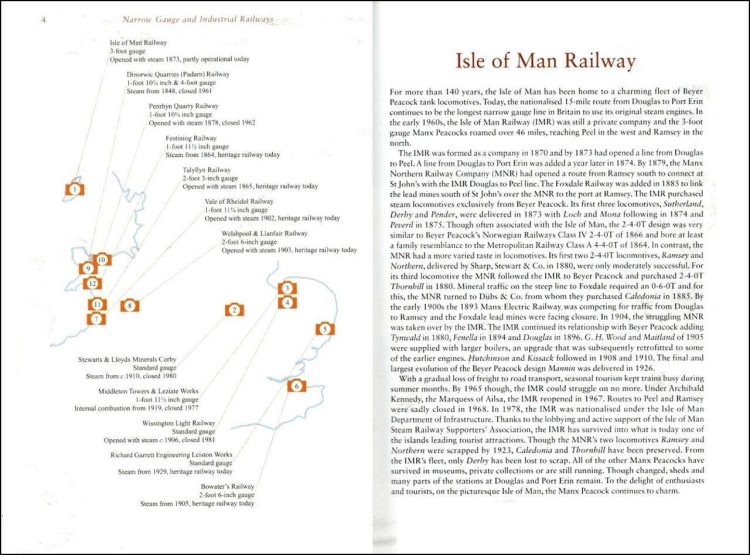
Each section includes an outline map of the particular railway with the novel use of camera symbols to show the locations where photos in the section were taken, such as the map for Stewarts & Lloyds Minerals at Corby seen below.
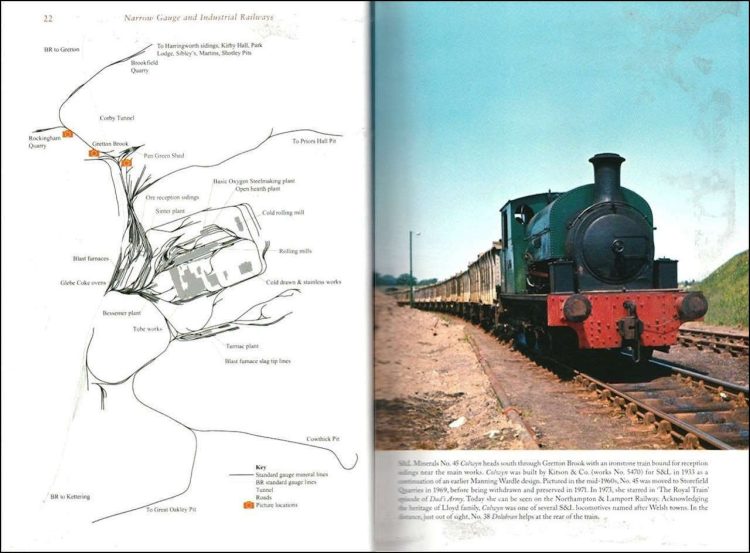
More than anywhere else in the book, nothing illustrates the quirkiness of industrial and narrow gauge railways more than the Wissington Light Railway, as seen on the right-hand page below. The top photo shows a train venturing through a field that is apparently devoid of rails, whilst the lower photo shows the line just visible through vegetation.
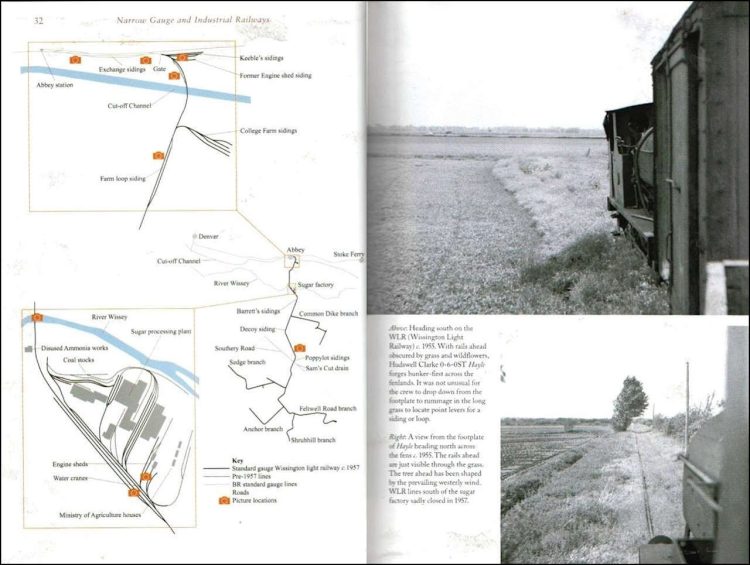
It is questionable whether the section on Richard Garrett Engineering’s Works at Leiston merits inclusion in the book, as its railway was confined entirely within the limits of the works, and there are many other larger industrial rail systems that could have been included. However, the saving grace of this section is the photo of the locomotive Sirapite at the bottom right, which looks much like a cross between a locomotive and an Aveling & Porter traction engine.
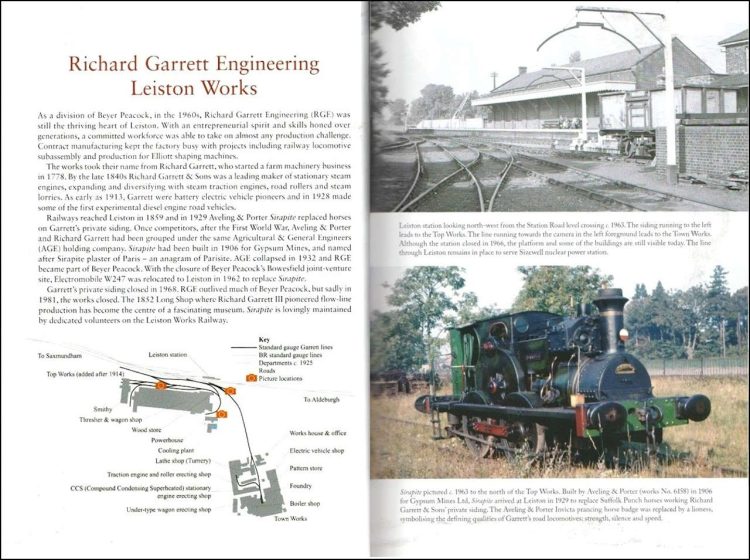
Several sections are devoted to Welsh narrow gauge railways, one of the oldest and most well-known being the Ffestiniog, although purists will no doubt question why the authors have chosen to spell it with a single ‘F’.
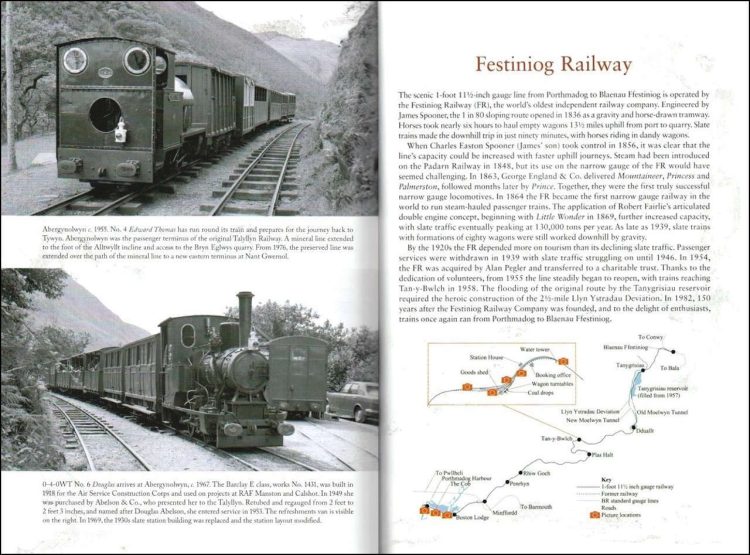
The book is available to purchase from Amazon and from Amberley Publishing.
We would like to thank Amberley Publishing for providing us with a copy of the book for review.





Responses
Purists KNOW why the Festiniog Railway is given a single F. It was given its parliamentary powers using this spelling and still legally retains it. Only for non-statutory purposes does it use the more recently introduced Ff which more accurately reproduces the Welsh pronunciation.